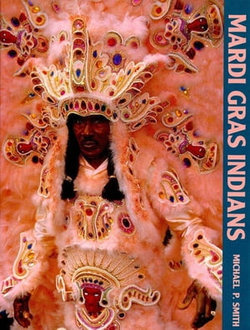A sociological study of the African American carnival revelers in New Orleans who dress in Native American-influenced costumes.
One of the most dazzling elements of the Mardi Gras celebrations, the Mardi Gras Indians receive the attention and respect of carnival-goers for their elaborately beaded costumes and entertaining dances. But what few realize about the groups is that the parading is more than just for show. Costuming, dancing, and all the rituals of these groups are acts of cultural preservation that date back more than a century.
In this book, author Michael P. Smith addresses the sociological issues surrounding the mislabeled and rarely understood Maroon groups now known as "Mardi Gras Indians." His textual analysis of the culture examines its African origins and how the participants help to develop the African American cultural identity. He looks at how some African Americans resisted efforts to suppress traditions that are re-emerging in modern society. Researched and documented by generations of oral and written history, this work clearly outlines the mistaken identification of the Mardi Gras Indians as just an entertainment element of the carnival season. It also shows the vital role this traditional culture plays in the community, much as the black Spiritual Churches do, in preserving an authentic base for the unique cultural heritage of blacks in New Orleans. This work illustrates how the Mardi Gras Indians are a part of the New Orleans second-line tradition.
A dynamic element of this book is the collection of more than one hundred color photos. These prints capture the striking beauty of spectacles with a purpose far greater than entertaining. Combined with authoritative text by Smith, the visual images round out this examination of the roots of the Mardi Gras Indians and current practices of the whole range of African American cultural societies and parading groups in the Crescent City.



Share This eBook: